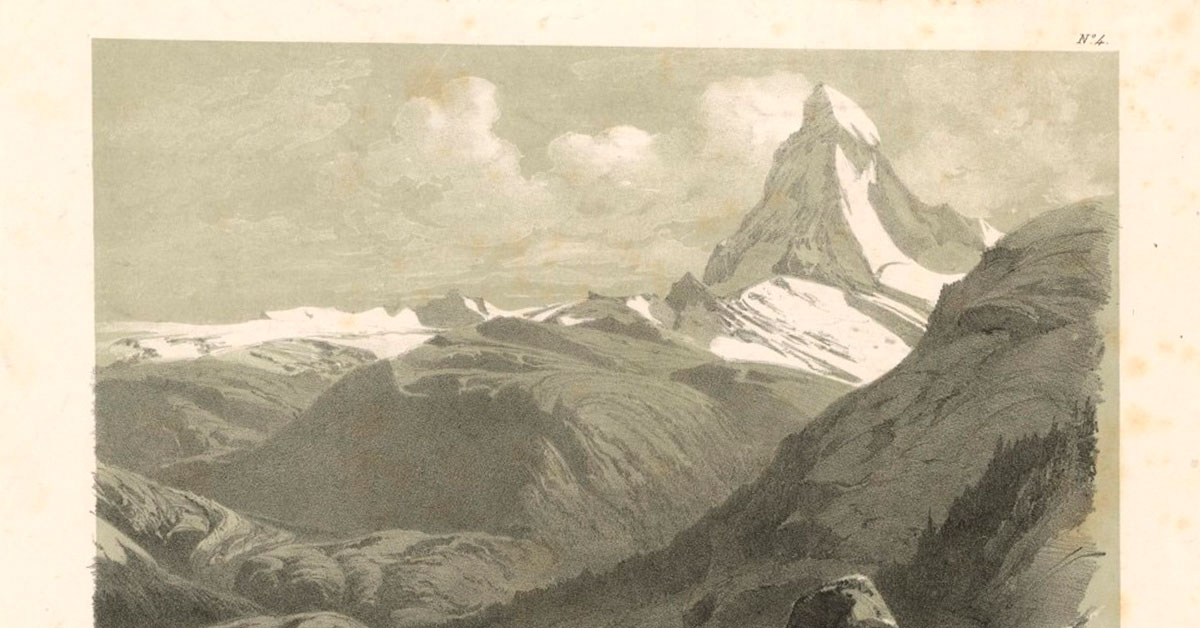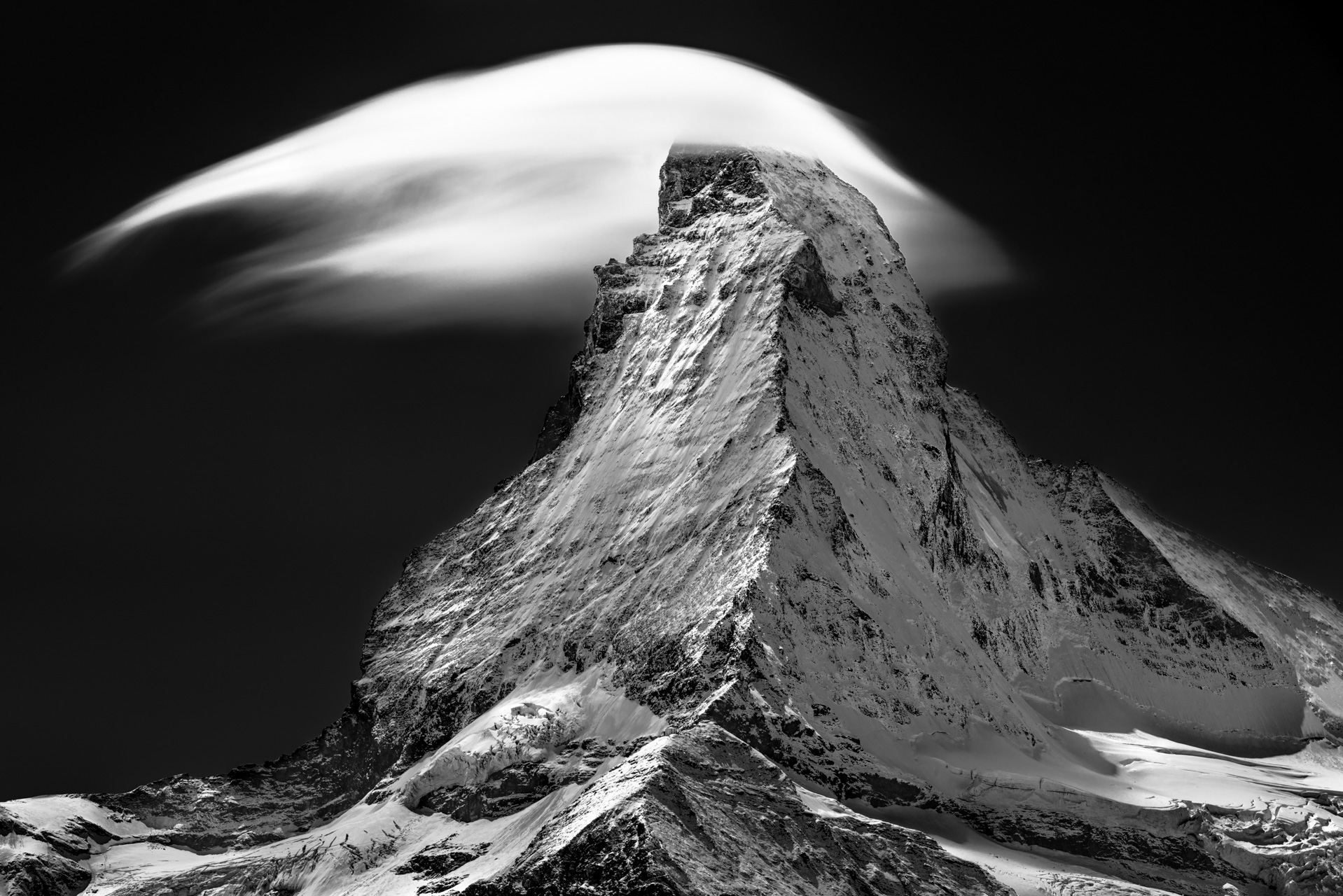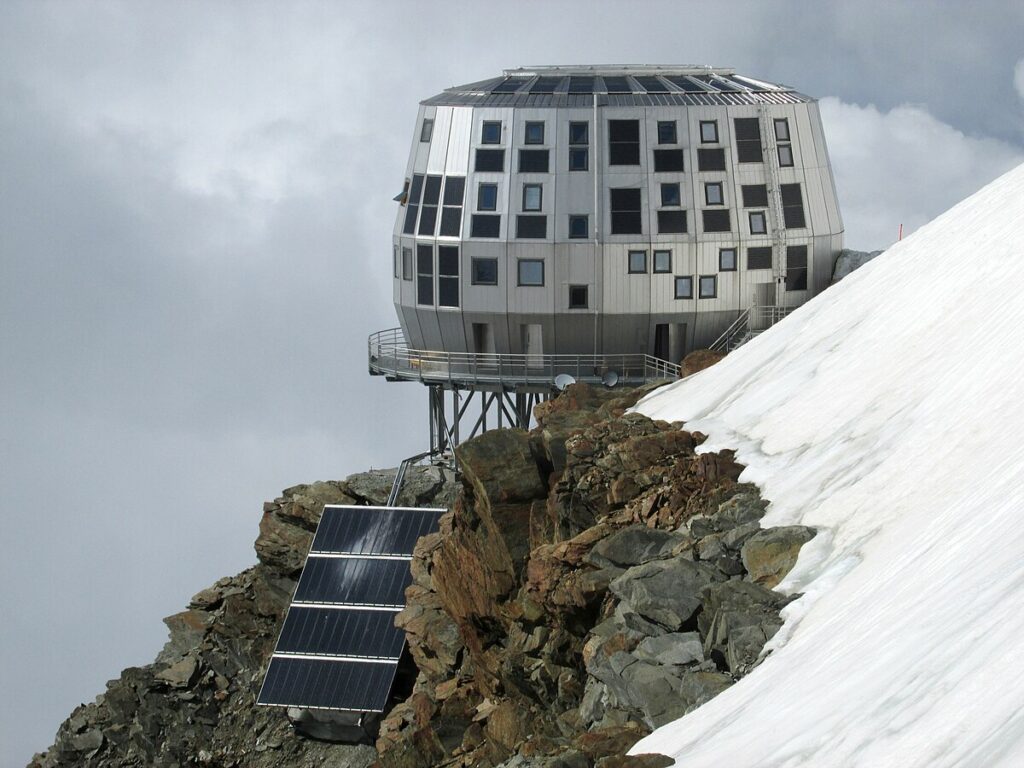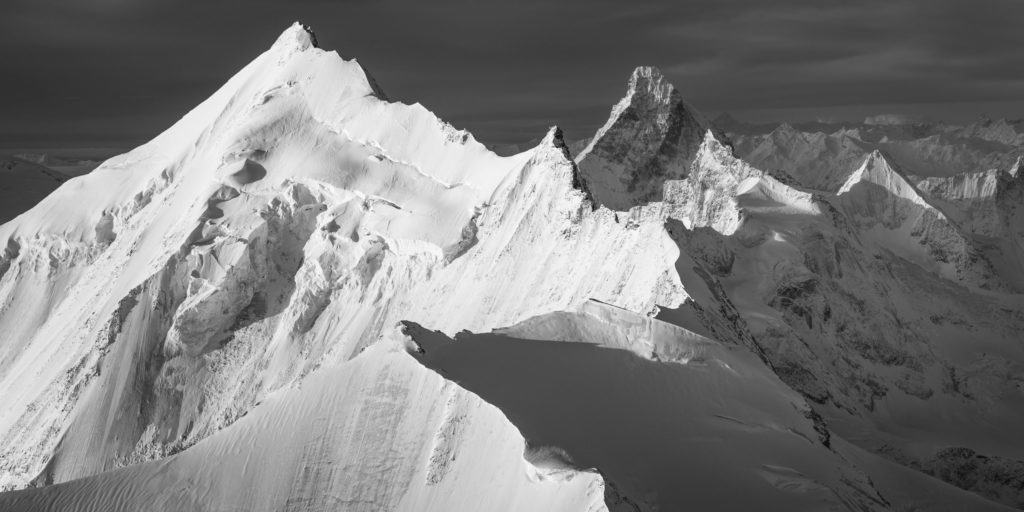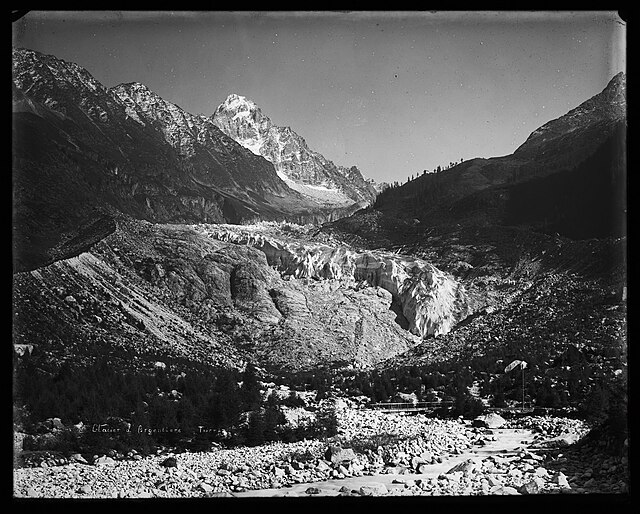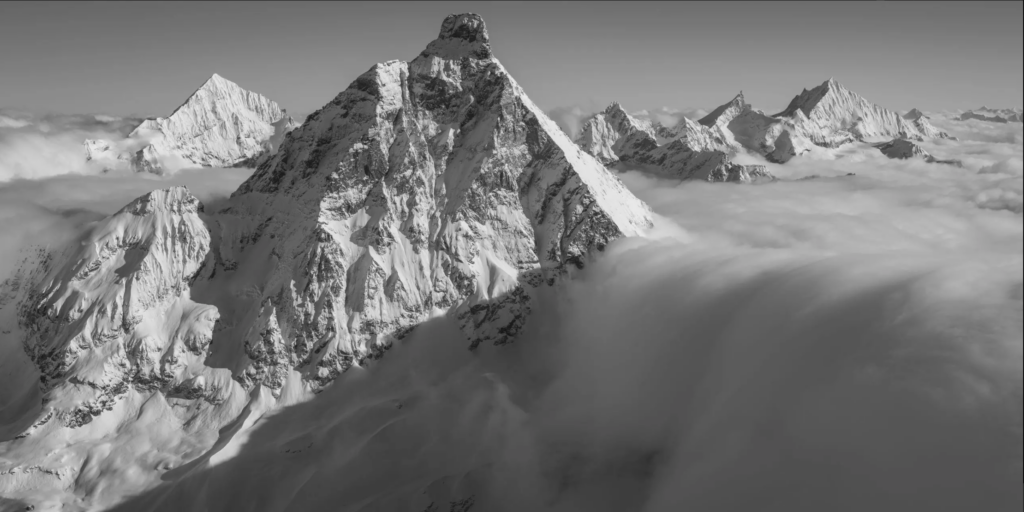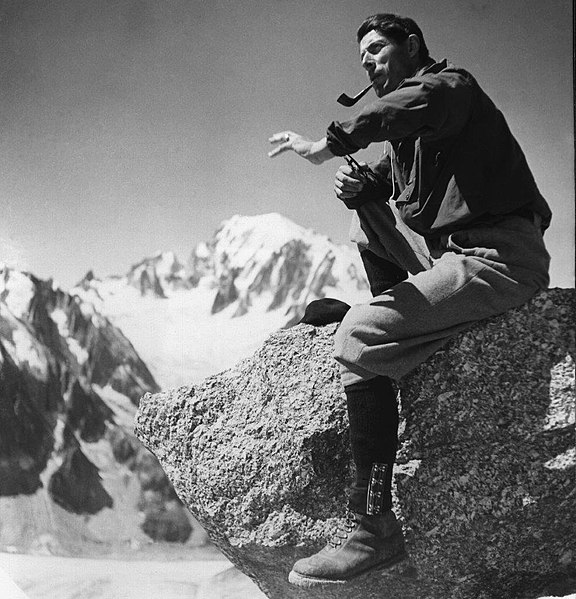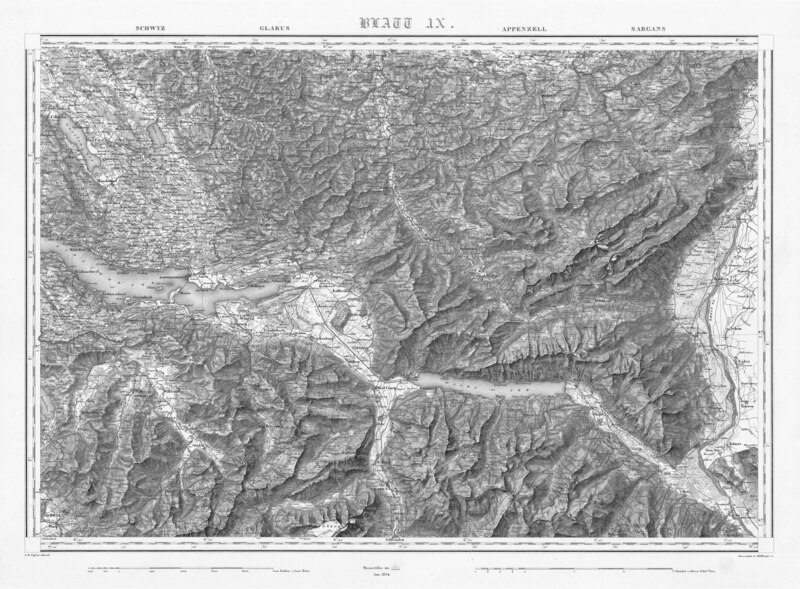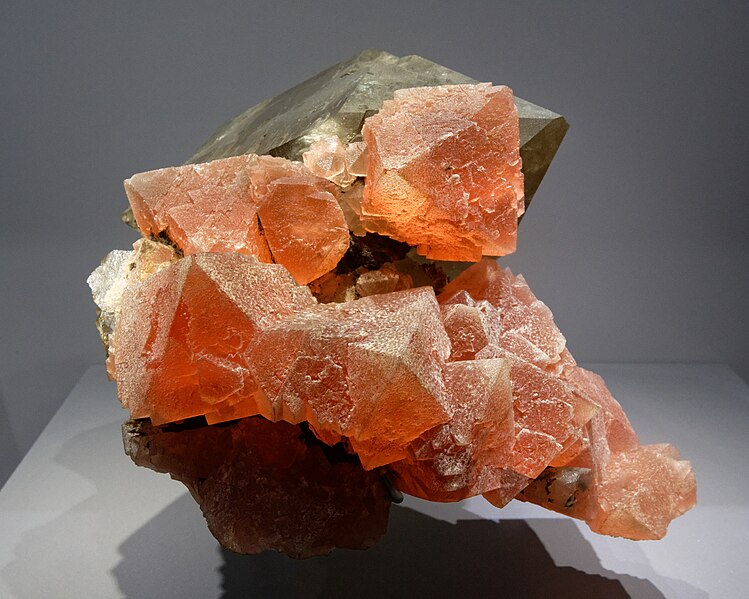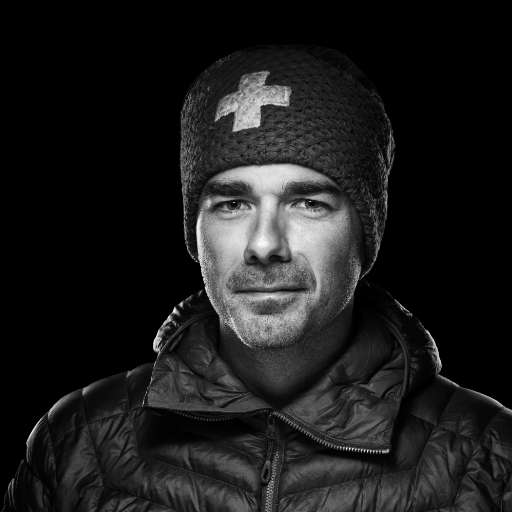Part II - second half of the 19th century
An international reputation acquired in the blood
If the Matterhorn gained notoriety in the first half of the 19th century, it is only in the second half that it acquired international fame. Unfortunately, this was largely due to a tragic event: the death of four climbers during the first ascent on July 14, 1865.
This event caused a scandal in the European and international press, particularly because although accidents had occurred in mountaineering before, none had been so tragic. Following this first fatality, many people flocked to Zermatt to see with their own eyes the summit which saw four climbers plunge into the void
Lucy Walker, first woman on the Matterhorn summit
But the Matterhorn also attracts female climbers. The first female ascent of the Matterhorn in 1871, like the first in 1865, featured two main protagonists: the British Lucy Walker and the American Margaret Claudia Brevoort - better known as Meta Brevoort. Both already had female firsts. Lucy Walker was the first woman on summit the Eiger (1864) and the Lyskamm (1868), to name but two examples; she was also part of the first roped party to reach summit on the Balmhorn, on July 21, 1864. Meta Brevoort was the first woman to summit grandes Jorasses , Dent Blanche, Weisshorn and Bietschorn.
In 1869, Meta Brevoort had to give up because of bad weather at 650 meters from summit when she tried to climb the Italian side. She decided to try again two years later but Lucy Walker got wind of her project and tried to beat her to the punch. She succeeded on July 22, 1871. Her rival arrived at Zermatt the next day and was forced to admit defeat. She congratulates her rival and consoles herself on September 5 by becoming the first woman to reach Cervinia by going to summit of the Matterhorn since Zermatt.
To preserve the mentality of the time, Lucy Walker had to put on a flannel skirt to hide her pants. However, she would have removed them for the actual climbing, once away from the eyes.
The first winter ascent of the Matterhorn was made by the photographer and mountaineer Vittorio Sella (1859-1943) in 1882.
The Matterhorn photographed
After Ruskin and Dardel in 1849, the Matterhorn attracted the lens of many photographers in the second half of the 19th century. Notably that ofAdolphe Braun, who captured it from the banks of the Riffelsee, taking care to record its reflection in the lake. Gabriel Loppéwho painted the Matterhorn many times, also photographed it several times.
Let's conclude with Vittorio Sella (1859-1943), renowned Italian photographer and mountaineer. He climbed and photographed the summit several times, from different angles. Let's remember for example this photograph taken from the slopes of the Stockji probably.
It shows two mountaineers - their equipment in the foreground - sitting and looking at the Matterhorn from the west side. One is even smoking a pipe. A contemplative image that contrasts strongly with the efforts that were necessarily necessary to reach this place, but also with the many images of mountaineering of the time, in which the prowess of the climbers is highlighted.
The great Swiss artists are absent
The Matterhorn thus attracted crowds in the second half of the nineteenth century, but curiously enough, it attracted only to a lesser extent the great Swiss artists, who preferred the bernese alps, following the example of Hodler or Calame, who preferred to dedicate one of his paintings to the Monte Rosa massif.
Another notable exception is Felix Vallotton, with a woodcut from 1892.
The singer of the Matterhorn
There is a relatively unknown Swiss artist who made the Matterhorn one of his specialties: the painter Albert Gos (1852-1942). He painted the Matterhorn so many times that he was known as the "cantor" of the Matterhorn. It was not a foregone conclusion, however, as he himself says in his autobiography, recalling his first drawing at the foot of the Riffelhorn. He describes it as "clumsy and almost childish" because the Matterhorn is a
"beautiful mountain terribly difficult to draw"
Gos considers in fact that it has five faces, that of Zermatt having "something meditative that lifts the soul" while the synthesis of these five aspects [...] make this sublime mountain not a block of matter, but a kind of "Matterhorn-spirit", a thinker inhabiting the ether and not this world, and who blends his life detached from the earth with that of the gods."
Albert Bierstadt
On the other hand, the Matterhorn has attracted several foreign artists, including one of the greatest American painters of the 19th century: Albert Bierstadt. He painted at least four pictures of the Matterhorn, two in vertical format and two in horizontal format. They all date from the 1870s and 1880s, a period when fame and glory had already passed for the painter, who became famous in the 1860s for being one of the first to depict the American Rockies. The earliest, from about 1867, is also the most peaceful and the one in which Bierstadt remains closest to the actual topography.
In Sunrise on the Matterhorn, he does not hesitate to accentuate the forms of the Matterhorn. This exaggeration combined with the vertical format, the presence of fir trees in the foreground on the left and the clouds framing the famous summit accentuate its immense and imposing aspect. It is difficult not to think of the words of the French philosopher Maldiney, for whom the Matterhorn was a " pure phenomenon " and an " absolute presence ".

Discover the gallery of my photographs of the Matterhorn taken from 2012 on this link: https://www.thomascrauwels.ch/photos-montagne/ summits /photos-cervin/
